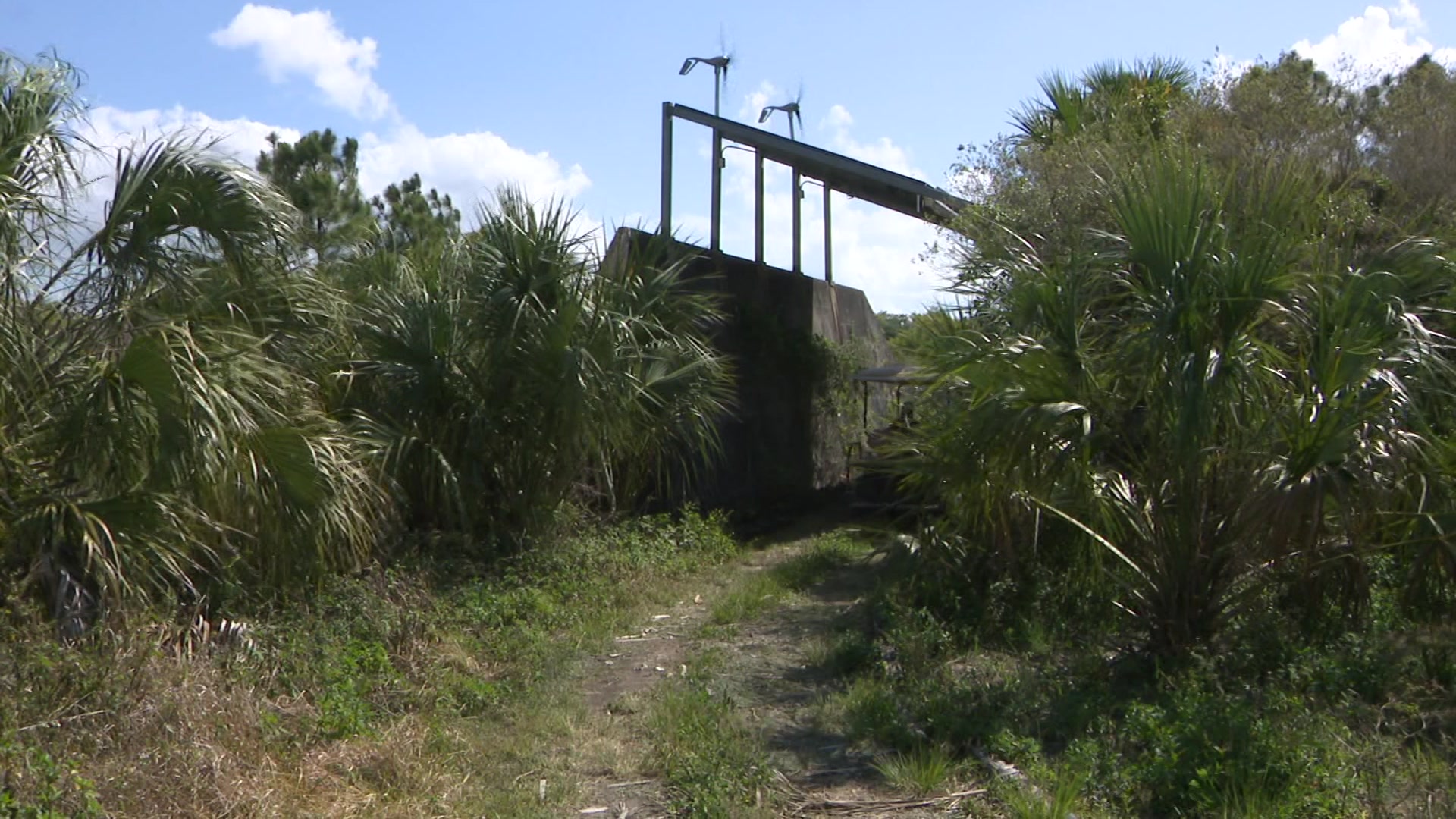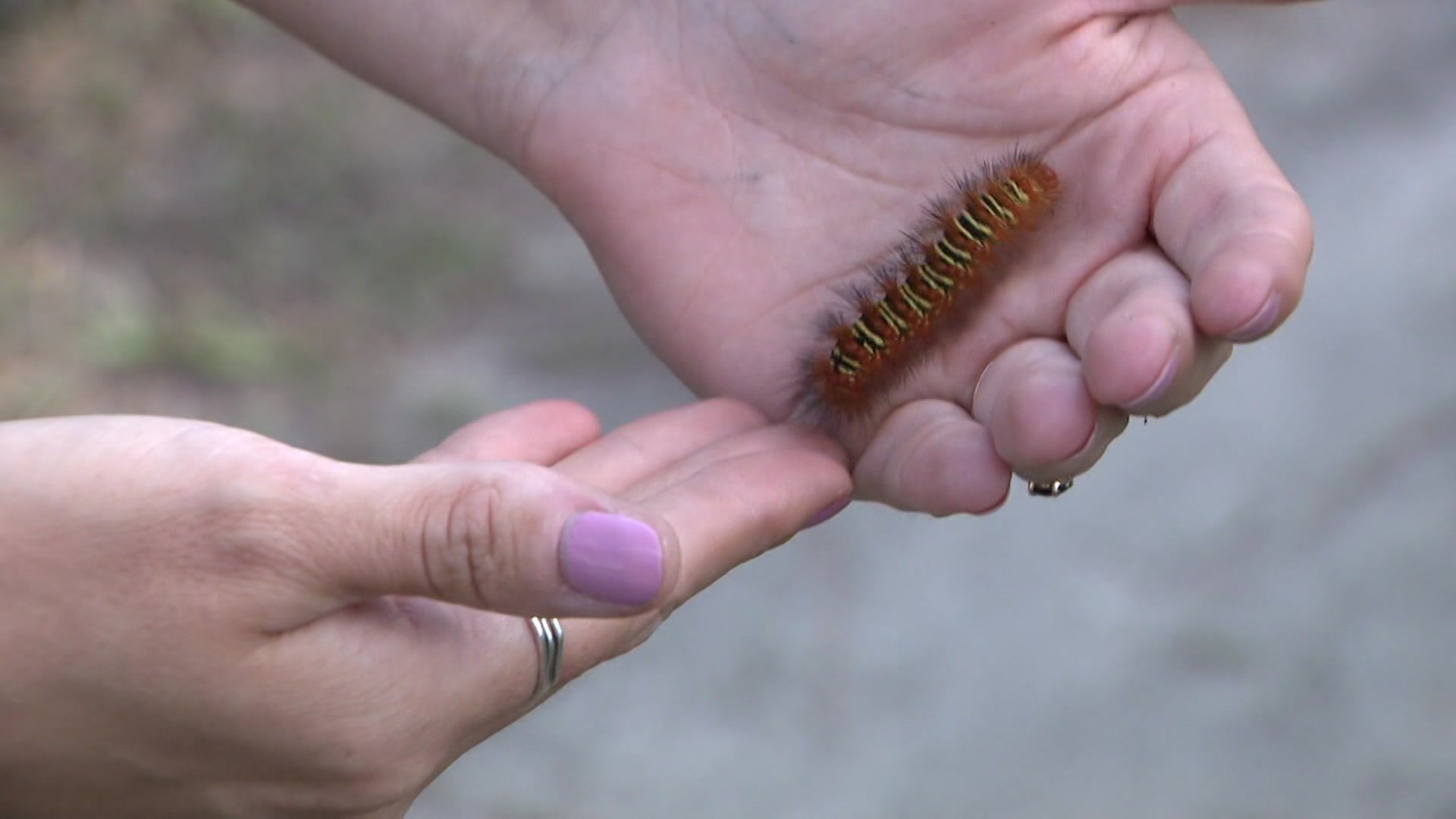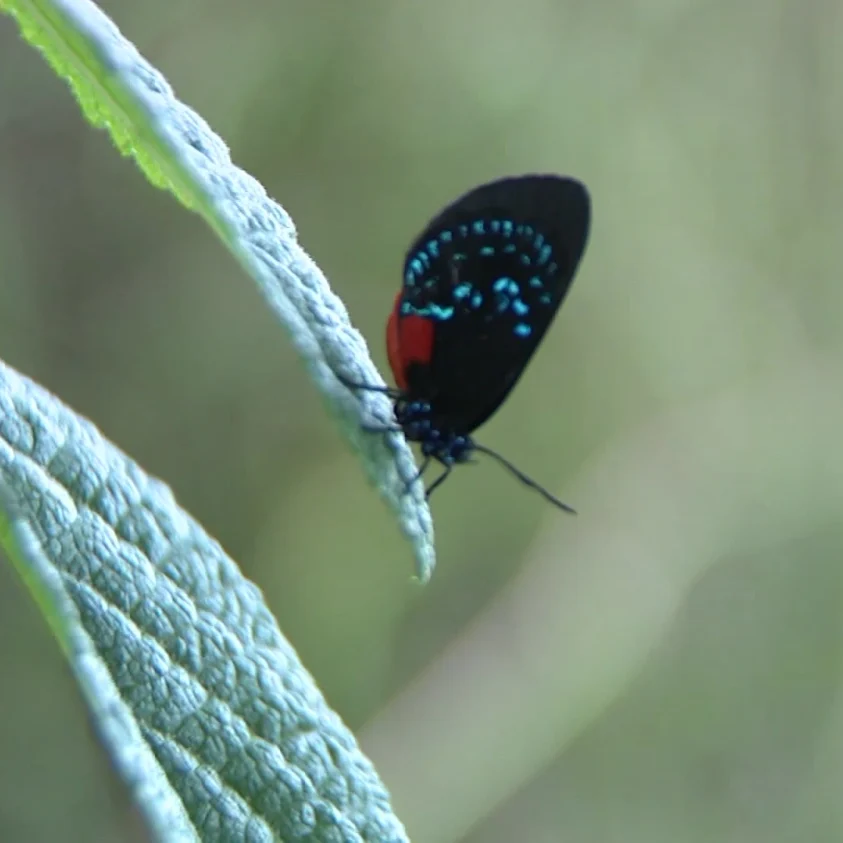MIAMI – Tucked away at Zoo Miami in an area not open to guests is a unique structure.
Out in the pine rockland surrounding the zoo is a World War II era bunker.

(CBS4)
This is the office of Tiffany Moore, a butterfly specialist studying and raising native butterflies with the goal of increasing their population in the wild.
The bunker is filled with all the stages of butterflies and moths.
“Butterflies have a huge role in pollination as many people know,” said Moore.
Moore explained the butterflies she is raising now, are the Florida native Atala hairstreak butterflies.
Other species are the giant swallowtail, Florida dusky wing, zebra longwing, Julia, and the Gulf fritillary.
It is important to understand the different species to best protect them in the wild and preserve their populations.
So why are they in a bunker?
The land was once home to the Richmond Naval Air Station long before the zoo was built.
For decades, this bunker was storage space, which likely housed ammunition. It was derelict until the zoo staff took a cue from the butterfly species and transformed it into a working laboratory.
They added solar panels, wind turbines, and a rain barrel so it is fully environmentally sustained, using no electricity.

(CBS4)
Its temperature is perfect for the eggs, caterpillars, pupa, and butterflies.
Outside, Moore grows the native plants each species needs like coontie, beautyberry, and scorpion tail.
Butterfly enthusiasts can be a part of this conservation and raise them in their home gardens, through Connect to Protect with Fairchild Tropical Botanical Garden.
Moore shows us how Atala pupa are readied to go to approved homes where their food is ready for them.
“They come glued to popsicle sticks for easy transport,” she explained.
The pupa in the chrysalis will then emerge as butterflies and live in their yards.
Hundreds have been given homes through this work.
Moore also releases full-grown adults both in the area surrounding the bunker and for the zoo visitors to enjoy, in an interactive experience.
“It is actually a really big hit with kids. They love coming because these (Atalas) are slow-flying butterflies. So I’m able to pick them up and put them into the kids’ hands and you can see they get really excited for it.”
It is rewarding work, Moore added, knowing her research has an impact.
“I think that people really connect with butterflies. It’s nice to see something wild that we can be up close with.”
To learn more about native butterflies and how you can adopt through Connect to Protect and more info on the conservation work being done, click here.
For more on Earth Month, visit Miami-Dade Parks HERE.


